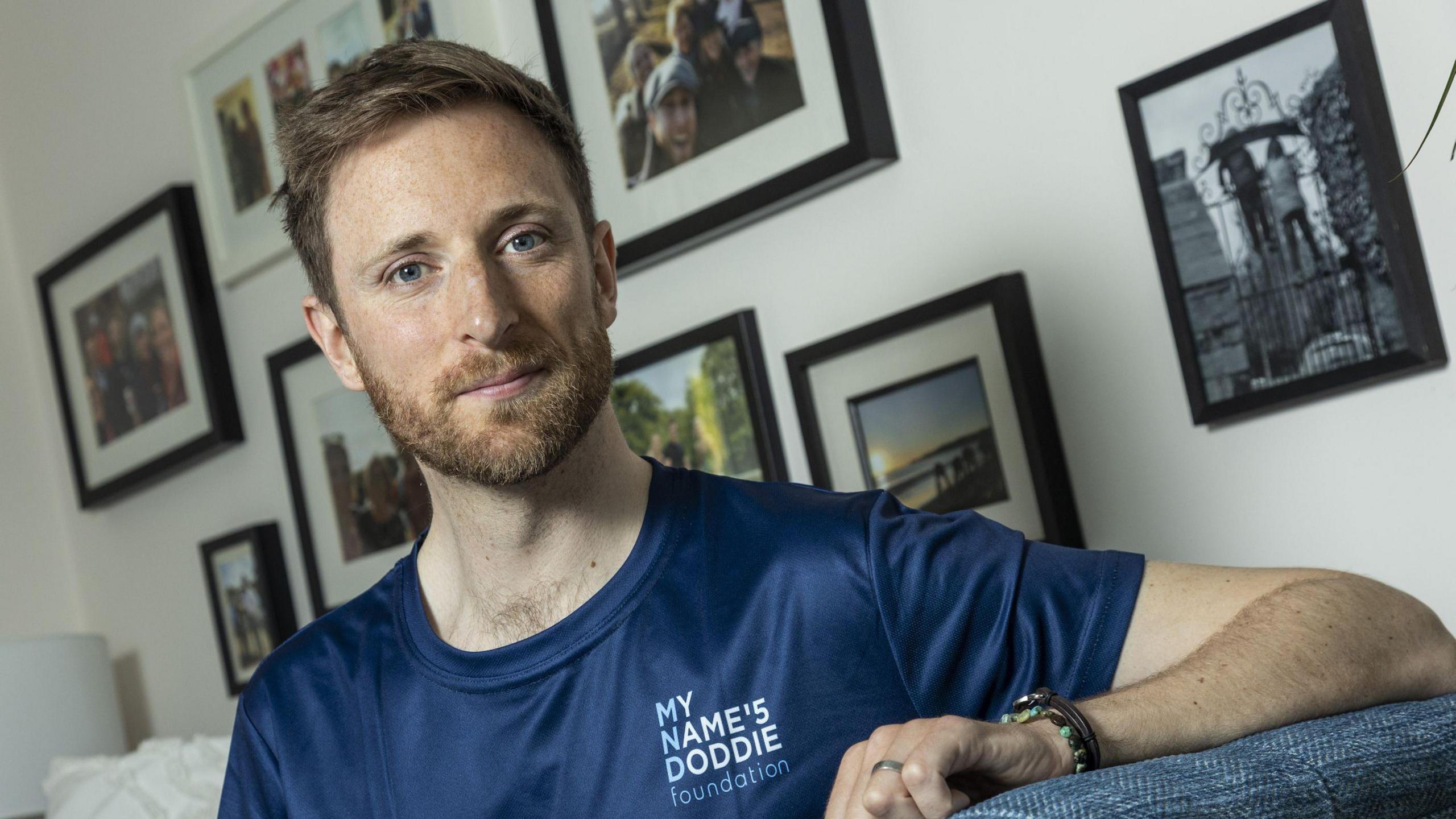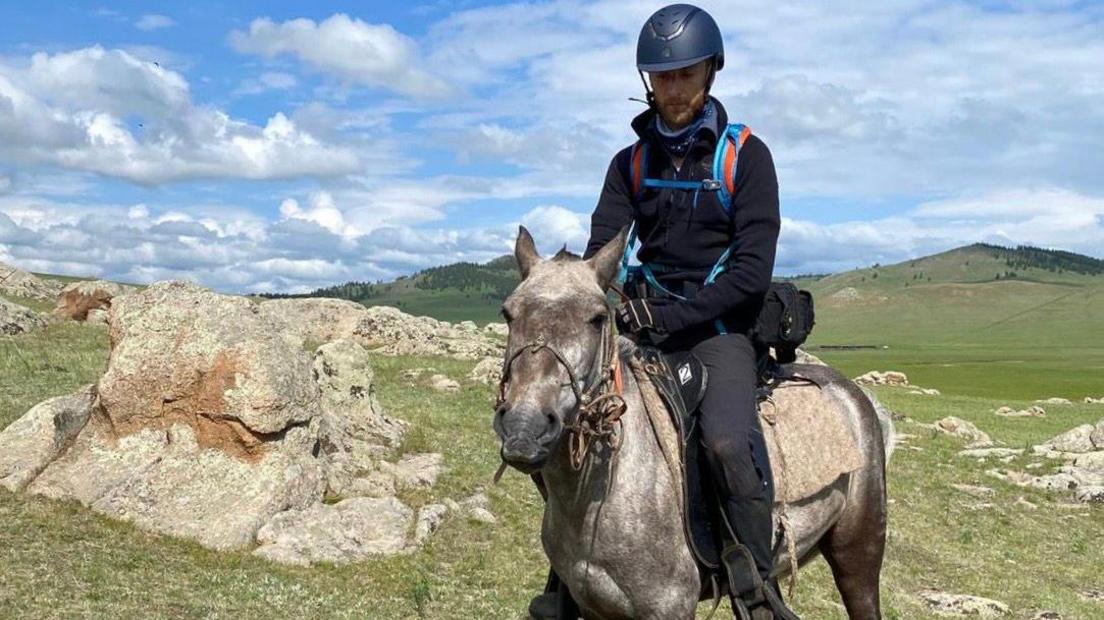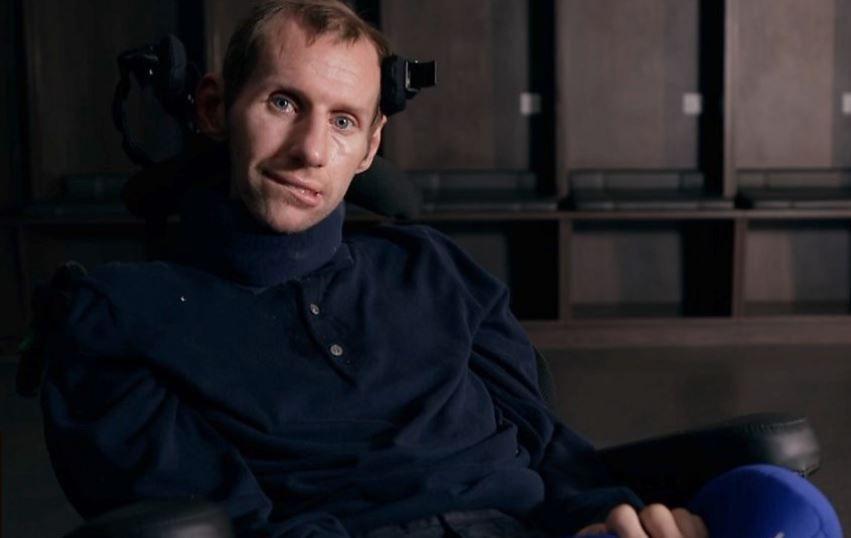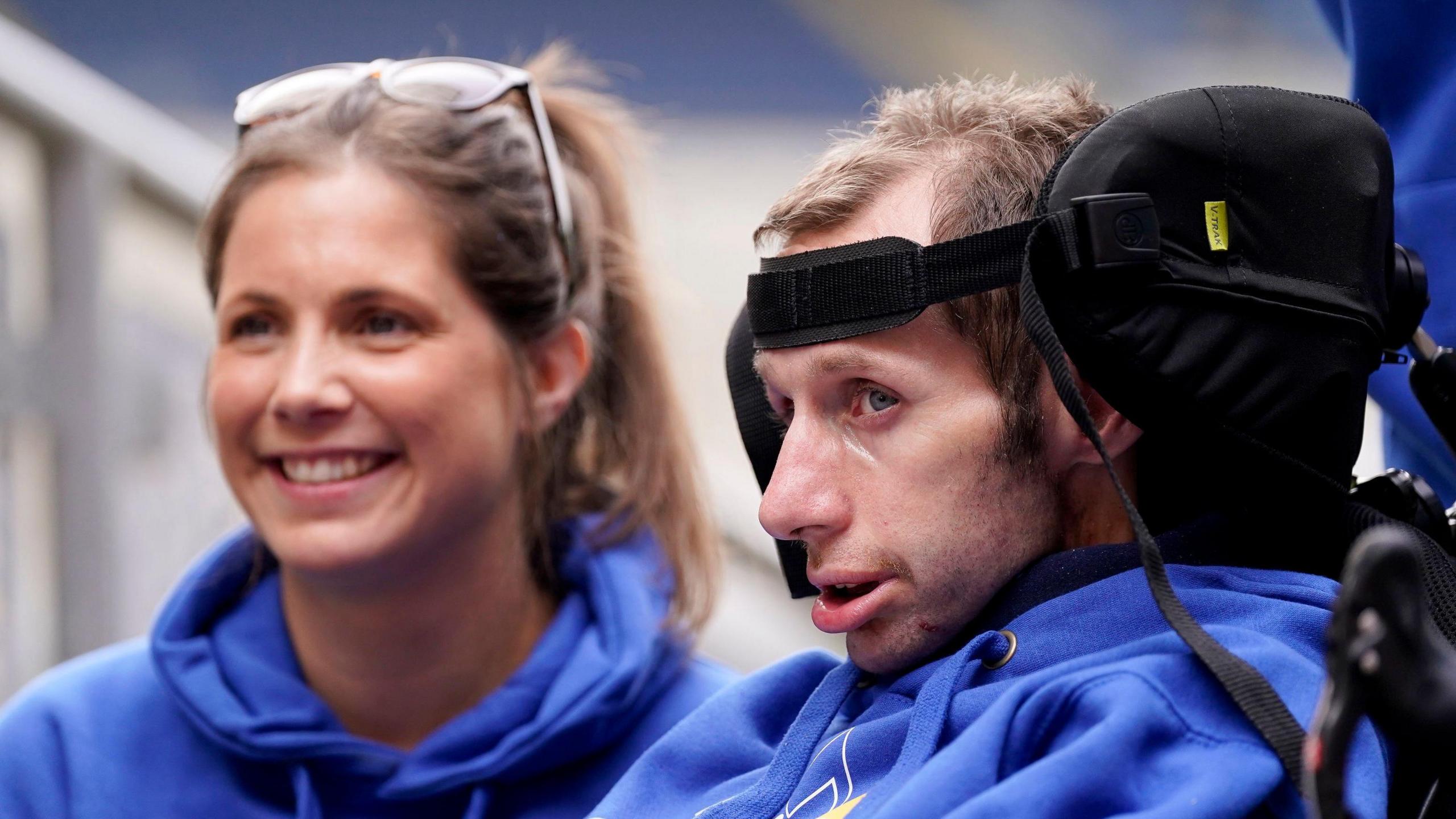MND patient to mark wedding anniversary during trek

Dr Luke Hames-Brown was diagnosed with Motor Neurone Disease in April 2023
- Published
A doctor with motor neurone disease (MND) will celebrate his wedding anniversary whilst walking the length of Hadrian's Wall to raise awareness of the condition.
Dr Luke Hames-Brown, 35, from Wheatley, near Oxford, who was diagnosed with MND last April, will set off on the 84-mile (135km) trek on Saturday with his wife Kate.
The couple will celebrate their second anniversary while they are away.
Their eight-day challenge will raise money for My Name’5 Doddie Foundation - the charity set up by former Scotland and British and Irish Lions rugby legend Doddie Weir, who died from MND in 2022, and the Motor Neurone Disease Association (MNDA).

Dr Luke Hames-Brown and his wife, Kate, are planning to walk 84 miles (135km)
Dr Hames-Brown retired from his job as a GP earlier this year to spend more time with his family following his diagnosis.
He said he started noticing his foot catching on the ground whilst out running in early 2022.
After speaking to his GP and a neurology team in Oxford he was sent for further investigations before receiving the diagnosis in April last year.
"It's a fairly rare condition, it's not something you see a lot of in general practice... it's not something anyone wants to hear," he said.
"[It was] pretty devastating to hear that, it certainly took some time to process that and what it meant for us and our family."
There is no cure for the condition, which affects about 5,000 adults in the UK, and the average life expectancy after diagnosis is two to three years, according to the MNDA.
"Some of those numbers are very scary," Mrs Hames-Brown said.
"The thing that we can do is try and pack in as much as we can in the next couple of years and do the traveling and things while Luke's as mobile as he is."

Dr Hames-Brown joined an expedition to Mongolia last year before his movement started to worsen
Last year, Dr Hames-Brown was selected to join an expedition to Mongolia supporting archaeological, botanical and zoological research, as well as the delivery of dental care.
"I’m so glad I did, it was incredible," he said.
"I had hoped that Mongolia would be the start of a career combining general practice and expedition medicine, unfortunately due to the progressive nature of MND, I won’t now have that, but I am so pleased that I still went there."
Dr Hames-Brown said his condition was progressing relatively slowly but found it particularly difficult to walk downhill which causes him to tire very quickly.
He added: "I strongly believe that while getting a diagnosis like this will inevitably dominate my life and define it, what I can do is control the narrative of that definition by continuing to do the things that I love and that mean a lot to me, with the people that mean a lot to me."
Hadrian's Wall runs from Wallsend on the River Tyne in the east of England to Bowness-on-Solway, Cumbria, in the west.
Follow BBC South on Facebook, external, X (Twitter), external, or Instagram, external. Send your story ideas to south.newsonline@bbc.co.uk, external or via WhatsApp on 0808 100 2240, external.
Related topics
- Published3 June 2024

- Attribution
- Published2 June 2024

- Attribution
- Published26 November 2022

- Published3 June 2024
